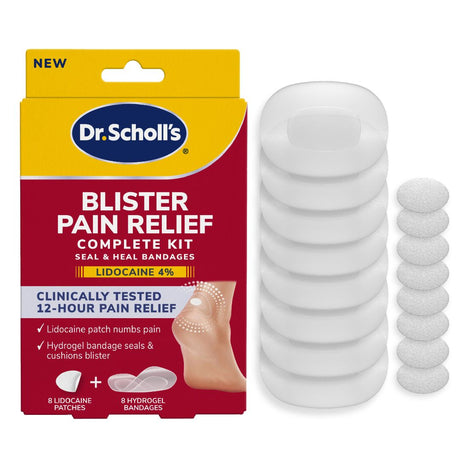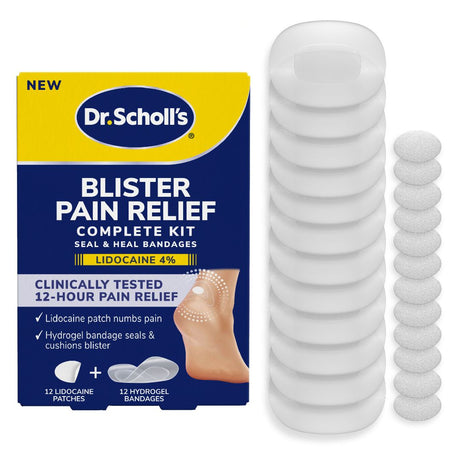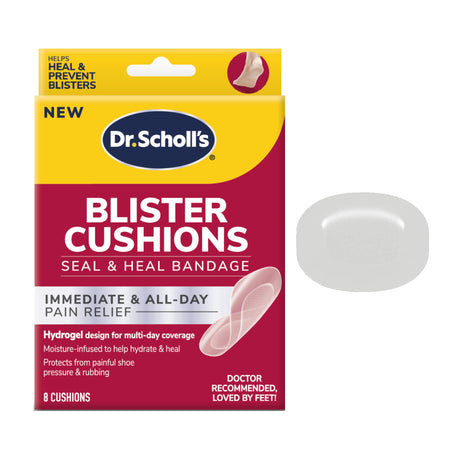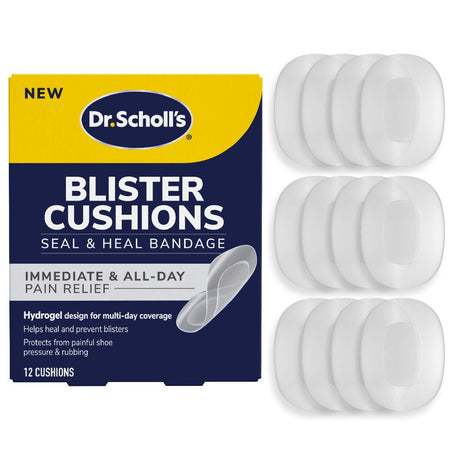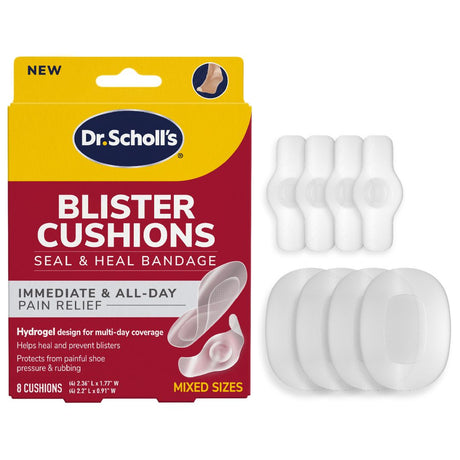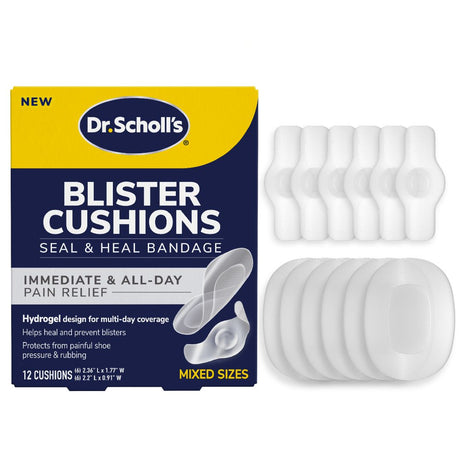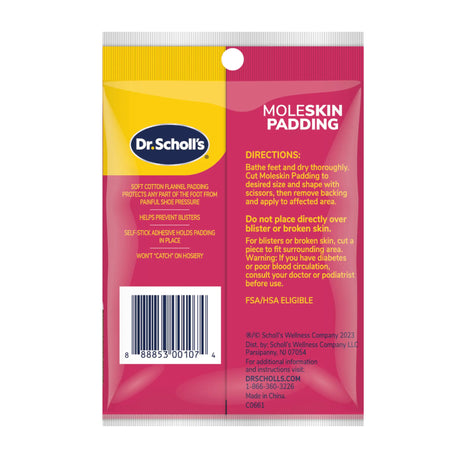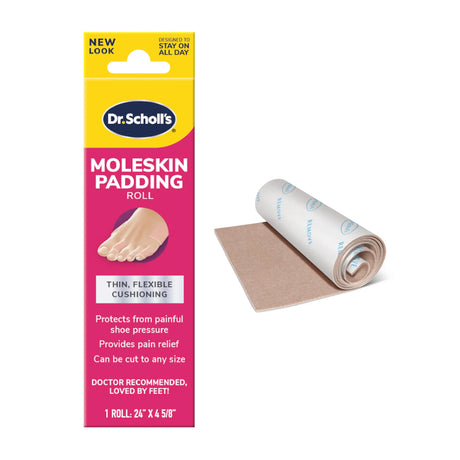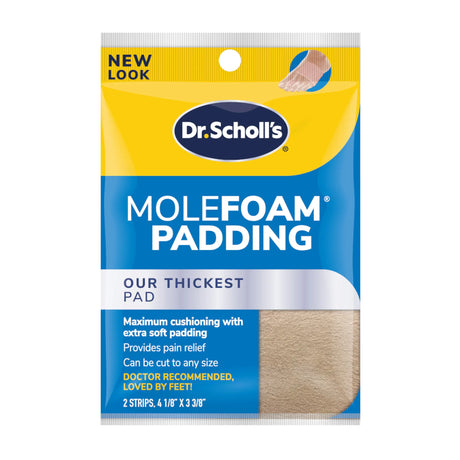Blister Cushions Seal & Heal Bandage with Hydrogel Technology Mixed Sizes
From $7.99Unit price /UnavailableFoot Blisters FAQs
Economy shipping is FREE for orders over $25+!
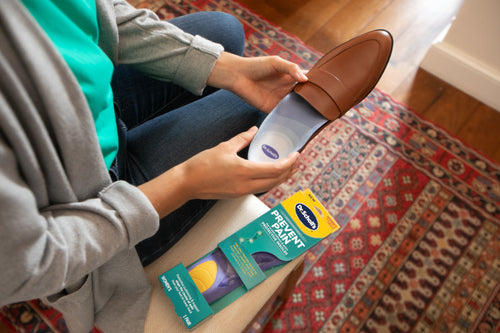
Blister Cushions Seal & Heal Bandage with Hydrogel Technology Mixed Sizes
If your foot blister is intact and it’s not causing discomfort, the best treatment is to leave it alone and let it resolve. Avoid wearing shoes that could rub against the blister. You can also cover the blister with a bandage for extra protection. Dr. Scholl’s® Blister Cushions with Hydrogel Technology protect blisters from shoe friction and pressure while hydrating to promote healing. The bandages have a thin, flexible design that moves with you and stays put up to several days.
If your blister accidentally pops, follow these steps:
1. Gently wash the blister using warm water and a mild cleanser.
2. Preserve the top layer of skin rather than peeling it back.
3. Consider applying an antibiotic ointment to reduce the risk of infection.
4. Cover the blister with a sterile bandage.
The best way to get rid of foot blisters is to leave them alone. Without additional trauma, most blisters go away on their own within a few days. To help with the healing process, cover the blister with a protective bandage and don’t wear shoes that rub or press against the blistered area. Resist the urge to pop the blister as this can increase the risk of damage and infection.
If the blister has ruptured, clean the area thoroughly with soap, apply an antibiotic ointment and cover with a bandage.
Popping a blister is not usually advised, as long as it’s not causing pain. Some doctors may recommend draining a blister if it’s unusually large, it’s painful or if it’s in a problematic area. If you decide to drain a blister, follow these steps to reduce the risk of infection and skin damage:
1. Wash the blister and surrounding skin thoroughly with soap and water.
2. Sterilize a needle using rubbing alcohol.
3. Using the needle, carefully pierce the blister at the edge, creating a single, small hole.
4. Gently press on the blister to allow the fluid to drain out through the hole.
5. Apply an antibiotic ointment to minimize the risk of infection.
6. Cover the blister with a sterile bandage. For faster healing, try Dr. Scholl's Blister Cushions. Unlike ordinary bandages, these blister cushions are designed specifically for blisters. They hold moisture in to speed healing while providing long-lasting comfort.
Contact your doctor if you notice any sign of infection, including colored discharge or pus, red, inflamed skin or a hot sensation.
Most foot blisters only last a few days as long as they’re not disturbed and allowed to heal. If the blister was caused by friction or pressure, it’s best to avoid the activity or shoes that caused the blister in the first place. You can use a bandage or cushion to protect the area against further trauma and to promote faster healing.
Most foot blisters are caused by friction and pressure, typically due to shoes that don’t fit properly or new shoes that haven’t been broken in. Sweaty feet can also contribute to blisters. Some less common causes of blisters include allergies, burns and infections. Blisters form to protect the skin from further damage. The body produces these fluid-filled pockets in order to shield the lower layers of skin.
There are a number of ways to reduce the risk of foot blisters from pressure and friction, including:
• Use moleskin — If you notice pressure or rubbing from your shoes, try moleskin to protect the feet. Dr. Scholl’s® Moleskin Padding can be cut to any size and applied to any area of the feet. The thin, flexible cushioning fits easily into shoes, providing all-day protection. For extra thick padding, consider Dr. Scholl’s® Molefoam® Padding Strips.
• Wear good shoes — Choose comfortable shoes that fit well. Shoes that are too tight or too loose can cause pressure or friction that can lead to blisters.
• Break in new shoes — Wear new shoes for short periods in the beginning. Wait until they’re fully broken in before you wear them for extended periods.
• Wear socks with shoes — Always wear socks with your shoes. Good socks can keep shoes from rubbing against the skin. Moisture-wicking socks are exceptionally effective for reducing blister-causing friction because they pull sweat away from the skin.
• Use foot powder — Applying powder to your feet can help absorb excess moisture and reduce the risk of blisters. Dr. Scholl’s® Odor-X Ultra Sweat-Absorbing Foot Powder can be used daily to help keep feet dry and fresh.
The most common cause of foot blisters is friction. There are a number of ways to minimize friction on the feet and reduce the risk of blisters. Follow these steps:
• Wear shoes that fit well. Make sure your shoes aren’t too loose as this can cause rubbing, which can lead to blisters. It’s also important to avoid shoes that are too tight and put painful pressure on the feet, as this can also lead to blisters.
• Wear moisture-wicking socks with your shoes to avoid friction from sweat.
• Apply foot powder to the feet before putting on socks in order to absorb excess moisture, which can increase the risk of blisters.
Dr. Scholl’s® offers a range of products to help prevent and heal blisters. These include:
• Dr. Scholl’s® Blister Cushions with Hydrogel technology feature a thin and flexible hydrogel design for maximum comfort that lasts several days, protecting the feet from painful shoe pressure. The cushions are moisture-infused to help hydrate and heal.
• Dr. Scholl’s® Molefoam® Padding Strips can help protect calluses, bunions, sensitive heels and other areas of the foot where friction and pressure commonly occur
• Dr. Scholl’s® Moleskin Plus Padding feature soft cotton flannel padding to protect and cushion any area of the foot experiencing friction from shoes. The padding provides all-day relief from pressure and discomfort.
• Dr. Scholl’s® Moleskin Plus Padding Roll consists of a flexible tape that helps cushion and protect corns and calluses while helping to prevent shoe rubbing
It’s always best to take proactive steps to prevent blisters whenever possible. When blisters do occur, they usually heal on their own with proper care.
